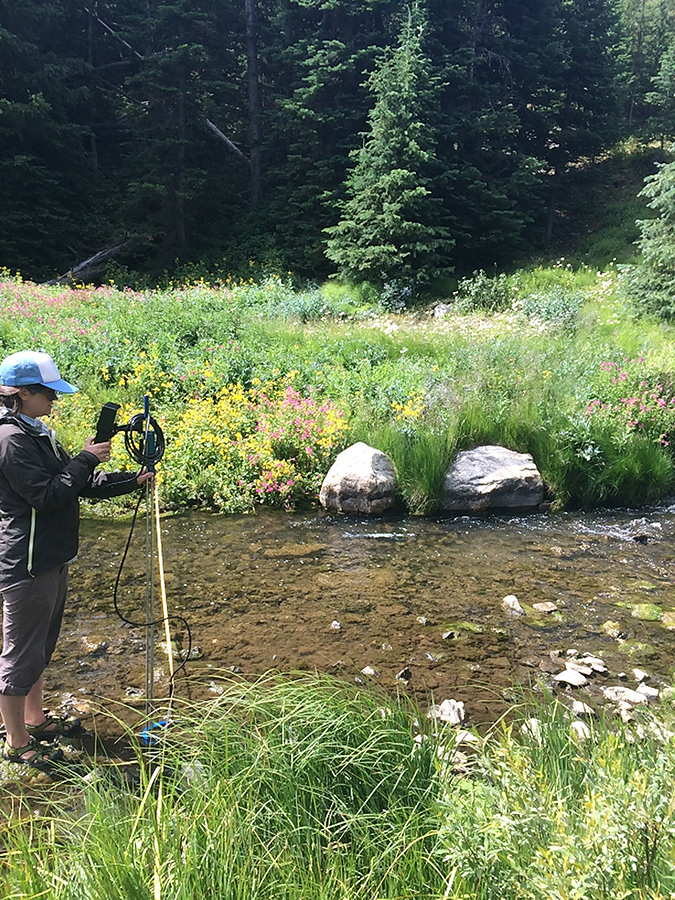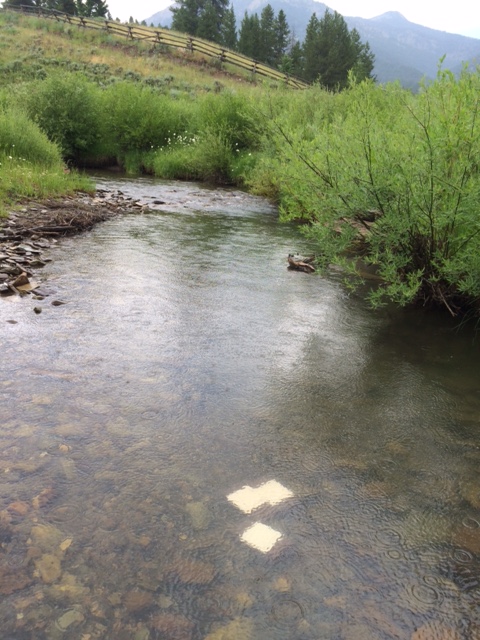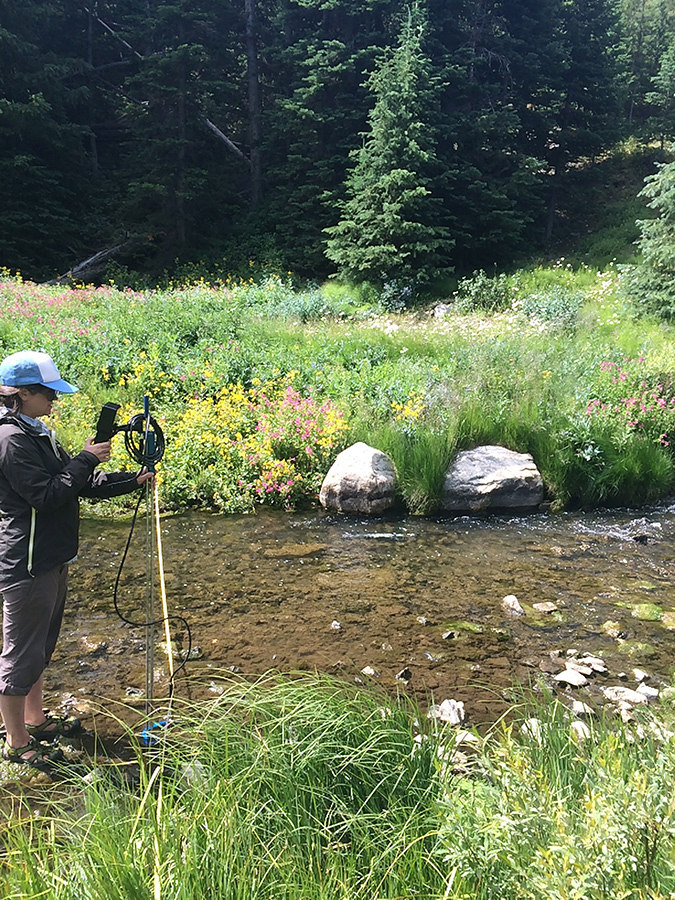Meet Meryl Storb – PhD Student at MSU in the Payn Watershed Hydrology Lab
Here’s what she has to say about her exciting new monitoring work in the West Fork Watershed:
If you’ve spent any time fishing, splashing or looking for animals on the West Fork of the Gallatin River lately, you may have spotted some new science in action. Montana State University is partnering with the Gallatin River Task Force to study the health of the West Fork Watershed.
The Payn watershed hydrology lab is interested to learn how stream ecosystems change as development occurs in an Alpine environment and how our changing climate may influence these systems too. Measuring stream metabolism throughout different stretches of the streams within the West Fork Watershed will help us to understand ecosystem health.
What is stream metabolism?
In very simple terms, you can think of stream metabolism as a measurement of how rivers ‘breathe’.
During the day, photosynthetic organisms, like algae, breathe in large amounts of dissolved carbon and breathe out oxygen that can be used by other organisms for growth. Scientists call this: Gross Primary Production.
At night, the balance shifts and most of the non-photosynthetic microscopic organisms (that don’t need light) breathe in oxygen and breathe out dissolved carbon gas. Scientists call this: Respiration.
The relative balance of ‘breathing in’ and ‘breathing out’ can tell you a lot about a stream. For example, how productive is the stream for insects and fish and how much oxygen is lost at night that is needed by other organisms?
Stream metabolism can be influenced by a variety of factors, including physical characteristics of the stream (slope, width, depth, and speed/volume of flow), biotic characteristics of the stream (abundance and diversity of organisms ranging from bacteria to fish), light and nutrient availability to fuel primary production, water chemistry and temperature, and natural or human-caused disturbance.
We are hoping this study leads to a better understanding of the factors that influence stream metabolism in an alpine environment so we can assess how development and changing climate may impact stream health in the future.
What are we doing?

Becca, an MSU researcher, hard at work measuring discharge – the volume (in cfs) of water moving through a stream at a particular time.
We are looking at seven different sections of stream within the West Fork Watershed this summer. We are using reaches on the North Fork, the Middle Fork, the West Fork and the creek that emerges from Beehive Basin. We hope to expand in future years.
We have been collecting measurements all summer long in order to evaluate metabolism rates in different areas of the watershed with different underlying conditions.
This means we are collecting physical measurements of the stream and its surroundings, including: discharge, slope, average width, average depth, and stream type.

Meet your friendly neighborhood LUX, a tiny sensor attached to the stream bed that measures the amount of light that reaches the stream.
We are also interested in how much light makes it to the stream so we are measuring LUX (luminous flux per area) and canopy cover within the seven reaches since light can have a strong influence on the rates of primary production.
In addition, we are measuring the amount of algae and water chemistry of the different stream reaches.
These measurements will allow us to quantify the rates of stream metabolism. We do all of this so we can understand the differences within the different reaches, which will enable us to compare the individual reach results in the future.

Ceramic tiles placed in the stream to measure the amount of algae growing over the short summer growing season.
You may see us working in the stream. Please feel free to come say hi and ask questions. You may also see instrumentation in the stream and along the banks. If you do, please try your best not to disturb the instruments.
MSU and the Task Force have also been working with the Ophir School and Jeremy Harder’s 4th grade students (now 5th graders!) to translate the premise behind this study into 4th grade science concepts.
Check out the blog post from April 11th for more info about Rose Vallor’s (MSU education department) first “Stream Breathing” lesson in the classroom.
If you have any questions or concerns, please don’t hesitate to contact us:
Meryl Storb (Ph. D. Student): meryl.storb@msu.montana.edu
Payn Watershed Hydrology Lab: 1-406-994-7197


